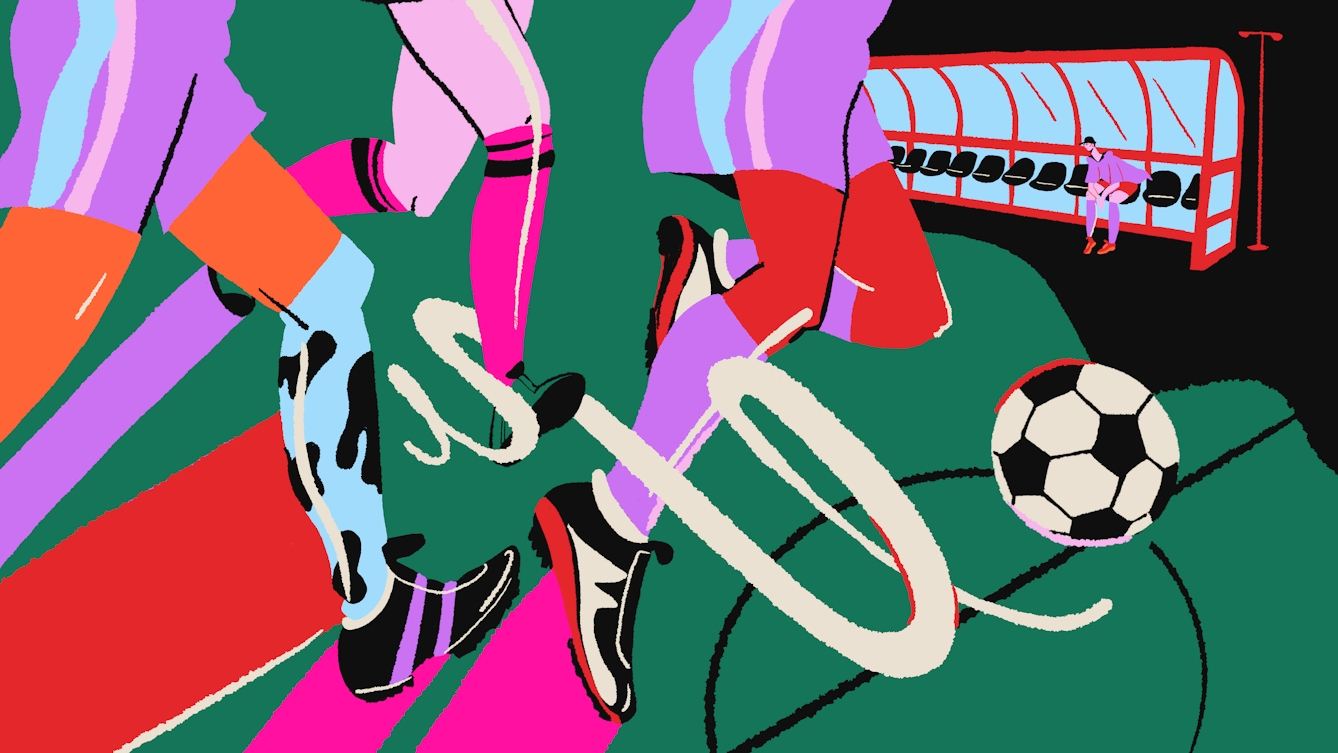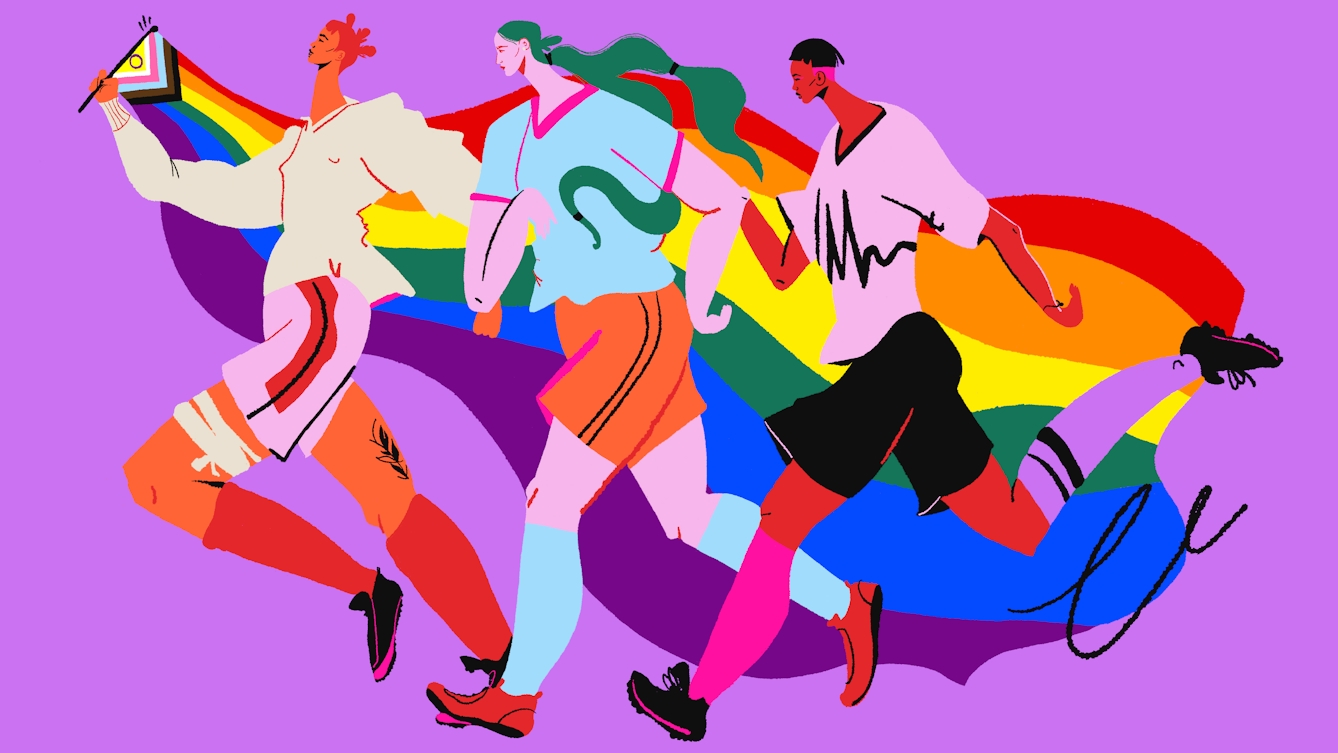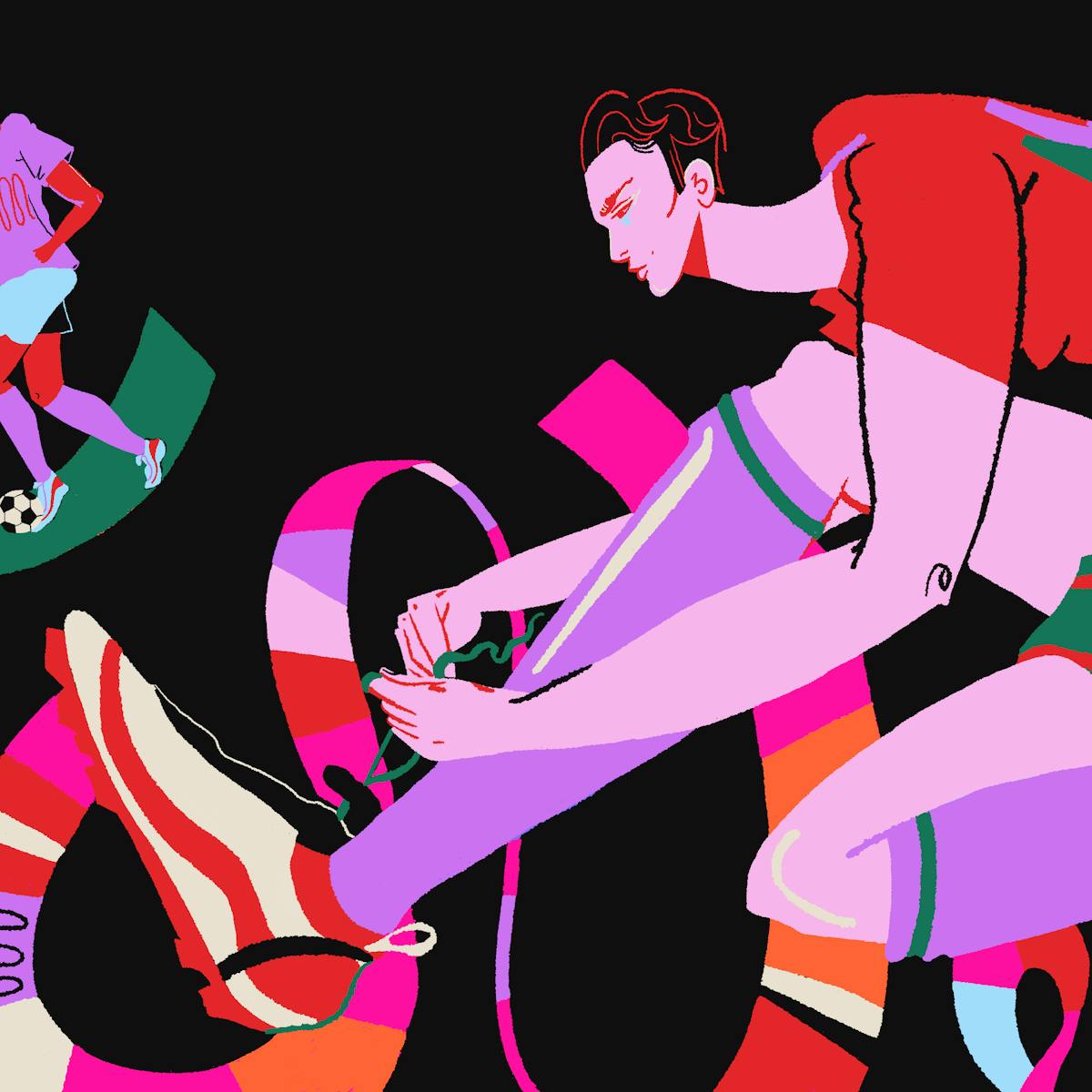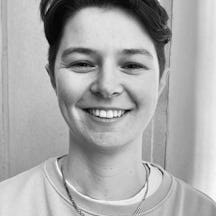A passionate football player, Lara Goodwin felt compelled to give up their favourite sport when they came out as gay. Sexism and homophobia meant the footballing world just didn’t feel safe. Here Lara explains how finding a queer-friendly club has been a game-changer and why football urgently needs to become more inclusive.
Most of my childhood consisted of me stepping inside at dusk, my feet wet, and football boots and socks soaked through. I’d hang up my boots and place my football in the cupboard for the night, ready to go again next day. I had read somewhere that David Beckham perfected playing with his right foot by kicking a ball through a hanging tyre. So I found a hole in a garden wall and repeated the same exercise, over and over.
This was the daily routine for most of my youth. Despite being a sociable child, internally I experienced acute anxiety. Nicknamed ‘worrywart’ by my family, I spent long periods of time ridden with angst about their safety. I was unaware at the time, but football was my escape: a mindful practice that helped me to focus on the present. My fears dissipated when I had a ball at my feet.
But when I was 19, I came out as gay and abandoned the game. Years of playing had taught me football was not a safe place for a girl, let alone a queer person. I believed if I continued to play, I’d be rejected and even abused.
I had internalised homophobic ideas about women who play football, and was resolute to not be one of them. Instead, I chose to embrace notions of femininity, checking the mirror each morning to ensure my outfit wasn’t “too gay”. My hope was to slip into the heteronormative world fairly unnoticed.
Football’s homophobia and sexism problem
The footballing world is often referred to as “a community” – it can help people build emotional support networks and improve wellbeing and health. But it’s not a safe space for all.
As a young girl playing football in the early 2000s, I got used to boys rolling their eyes if I was selected for their team. They expected me to be the weakest player. Aged nine, I scored a goal for my local club. The thrill was tarnished by one opponent yelling: “I can’t believe we let a girl score against us!”
Being the only girl at football camp was a common and lonely experience. The boys rarely spoke to me. And while I’d be excited at the prospect of playing football for a whole week, I knew it would also feel alienating. Whether it was the condescension of the coaches, or the boys mimicking toxic facets of the men’s game, I felt like an outsider.

You don’t have to look far to see the sexism and homophobia in football.
Homophobia has never been far away from the game, either. Years older, and sitting at lunch with my new college friends, I was recounting the weekend’s match, only for one person to interrupt by asking: “You’re not one of those sporting d*kes, are you?” I laughed off the comment but felt a well of humiliation and fear at the idea of someone perceiving me as queer.
Back then, despite all the discomfort, the thing that kept me playing was my sheer love of the game and the relief it gave me. That’s why my decision to stop playing after coming out proved only temporary.
During a dip in my mental health at university when I was 21, I knew I needed to dust off my boots and get back on the pitch.
Joining an inclusive football club
I’d lost a lot of stamina after my two-year hiatus from football. But through regular training, matches and sessions at the gym, I soon felt my body becoming stronger. I ran faster, jumped higher, lifted more. I remembered the wonderful sense of escape I’d felt doing sport as a child. Movement energised my mind as well as my body.
I found the perfect antidote to the mainstream world of men’s football I’d been so disillusioned by: I joined a queer-friendly football club in east London.
And soon after, I found the perfect antidote to the mainstream world of men’s football I’d been so disillusioned by: I joined a queer-friendly football club in east London.
My first session was in Victoria Park in Tower Hamlets on a balmy evening in 2019. I was taken aback when everyone introduced themselves with their names and pronouns. I instantly knew I’d found the right place.
Four years later, I’m a qualified coach and support a variety of groups, from three-year-olds to adults in my own team who have never touched a ball before. I’ve developed in every way imaginable – skilfully, tactically, personally and professionally.
My club love football as much as I do, and we welcome all women and non-binary people.
The camaraderie among us repairs the damage the game has done to many queer people – those who had bad experiences as children, who faced body-shaming, who struggled in hyper-competitive and gendered environments. Our teams are built on who is available and keen to play, rather than on who is the best. This set-up minimises the feeling of pressure and the discomfort that comes from being excluded.
There’s still a way to go to make football a safe space. The 2022 men’s World Cup infuriated me. The tournament was hosted in Qatar – a country that criminalises same-sex relationships – and football’s governing bodies showed little regard for LGBTQIA people in the region. It wasn’t an option to go as a spectator to a country that imprisons people like me.
I became frustrated by the token gestures of LGBTQIA inclusion and oversimplified narratives about the LGBTQIA community in Qatar. Rightly or not, I avoided the tournament altogether.
But the fast-growing interest in women’s football is changing perceptions of queerness in the game – and I’m optimistic.
The Lionesses – England’s women’s national team – made history in 2022 with their Euros win. I watched the final with my club. There were around 100 of us in a room, fixated on the big screen, nervously fidgeting, breath held as we watched the minutes tick by.
When Chloe Kelly scored the winning goal in extra time, we erupted into a chorus of singing, dancing and profound emotion. To me, it was more than winning a game of football. I felt the weight of what those players had probably endured to arrive at that point of their career – likely also being the only girl at their football camp, experiencing the same sneering comments and doubt that I did. It was a seismic moment for women’s football.

A team that celebrates me, in all my queer glory.
What’s more, I now see that growth reflected in grassroots football. The children I coach proudly wear England shirts with players such as ‘Mead’, ‘Williamson’ and ‘Bright’ emblazoned on the back.
Many of the England players are openly queer. Beth Mead – one of the best players in the world – speaks candidly about her sexuality. I feel incredibly excited that there are players who can be their whole selves on the pitch. As someone whose world is full of queer footballers, it is wonderful to see that reflected back in the professional game and it makes me root for their success even more.
Safe, queer spaces are a game-changer
My football club feels like an important safe space, given that life is increasingly dangerous, frightening and exhausting for queer people in the UK. It’s difficult to navigate my own experiences of gender when the outside world feels resistant and closed. An onslaught of vitriol – including in sport – is being directed at trans people, and there is a rise in LGBTQIA hate crimes.
LGBTQIA football teams like mine are fighting this climate by supporting each other and celebrating together, regardless of the performance. This is in stark contrast to the other coaches I still see using derogatory language when teaching children, with no consideration of the harm that causes.
Unbeknown to 19-year-old me, queer community was what I needed to flourish and feel comfortable. It has given me a space to explore my sexuality and gender, and taken away the isolation I felt when I first moved to London.
After matches we journey to the pub soaked and cold but full of post-football bliss. Now when I get home, I take my muddy boots off and hang them next to my girlfriend’s. I no longer play alone in the garden – I play in a team that celebrates every part of me, in all my queer glory.
About the contributors
Lara Goodwin
Lara Goodwin is a writer and researcher specialising in the rights of queer people globally. They also play a bit of football every now and then.
Carolina Altavilla
Carolina Altavilla is an illustrator, designer and art director based in Lombardy, Italy. She has illustrated for digital and print publications, posters, magazines, animations and books. Her illustrations mainly focus on diversity, fashion, lifestyle, activism, climate justice and gender rights.


